Bengal’s farmers cultivate high-nutrition laden Dutch cauliflowers
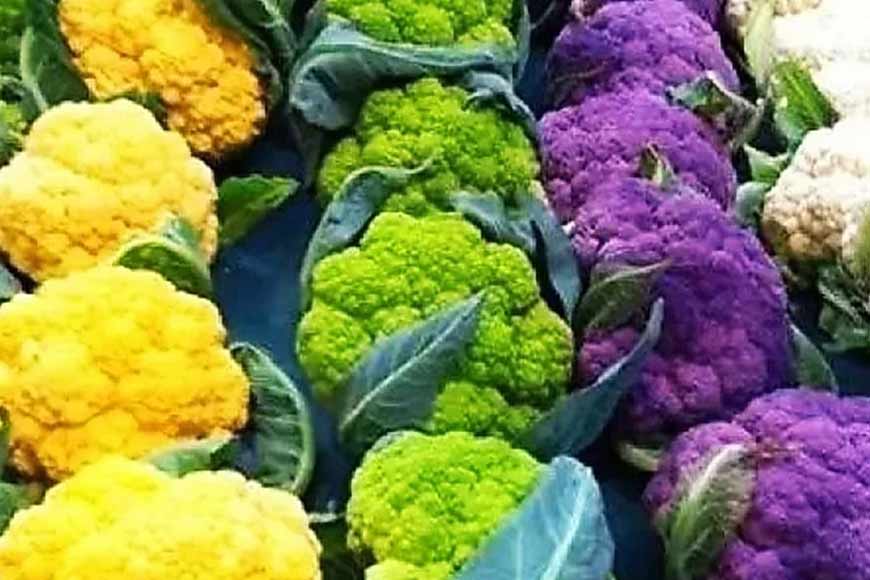
Have you recently come across something in the supermarket or local markets that look like cauliflower but instead of the traditional white, the heads are purple, orange, and green? Colorful cauliflowers have been popping up in the markets for the last couple of years and have increasingly become more popular and readily available. What are these colored cauliflowers? How do they taste? How to prepare them so they retain their color?
Global environmental changes have been running havoc and West Bengal has been witnessing sudden changes in weather, with spates of unseasonal rains causing severe damage to farmers throughout the state. This year’s unseasonal rains too, have ruined crops and cultivable land. Farmers of different areas of Durgapur have resorted to cultivating alternative crops in winter for sustainable farming practices. In the vast fertile land of Sonaichandipur, adjacent to Damodar River, farmers have been traditionally growing potatoes in winter but this year, a majority of them have shifted to cultivating cauliflowers and cabbages of different colors. The price of potato seeds has gone up and there has been a steep rise in the prices of chemical fertilizers as well to add to their woes, untimely rains have been causing huge losses to potato cultivation. The colorful varieties of cauliflowers and cabbages are packed with nutrition and there is a rising demand for these multi-colored winter delicacies in the local market as well.
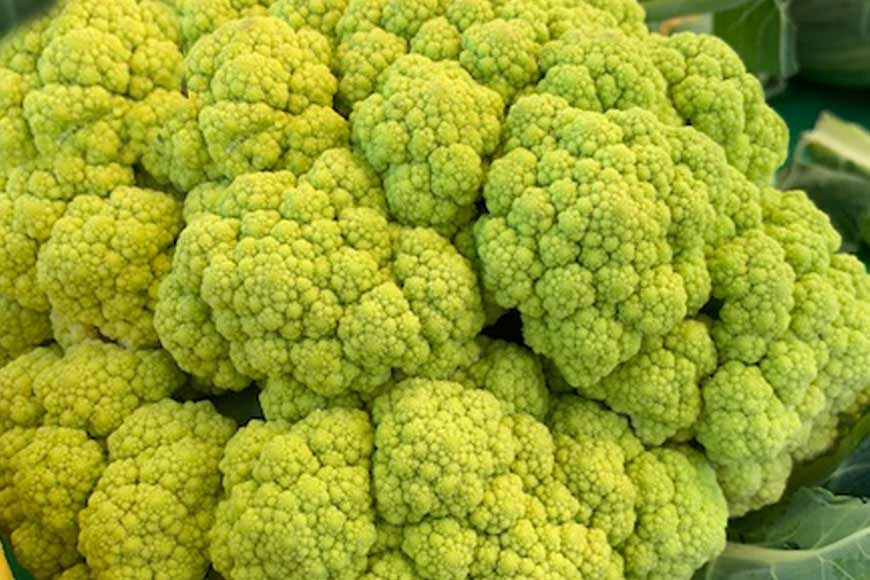
Apart from white, yellow, green, purple cauliflowers and colored cabbages are being sold in the wholesale market at Rs. 25-30 per piece and in the retail market the asking price is much higher. White cauliflower used to be the only option. The colored cauliflowers, like the white variety, are members of the cruciferous vegetable family. They have a similar texture and taste—mild, sweet, and nutty. The major difference is their color and with color, a slight difference in nutritional value.
Agricultural scientists have developed amazing variants of the cauliflower where the traditional white florets have been changed to a garish orange, purple and green. The "rainbow cauliflowers" are said to taste the same as the normal varieties, but add a splash of color to the dinner table. These are the results of traditional selective breeding -- where different strains have been crossbred until these strains have been created. Some scientists have even claimed that they are healthier.
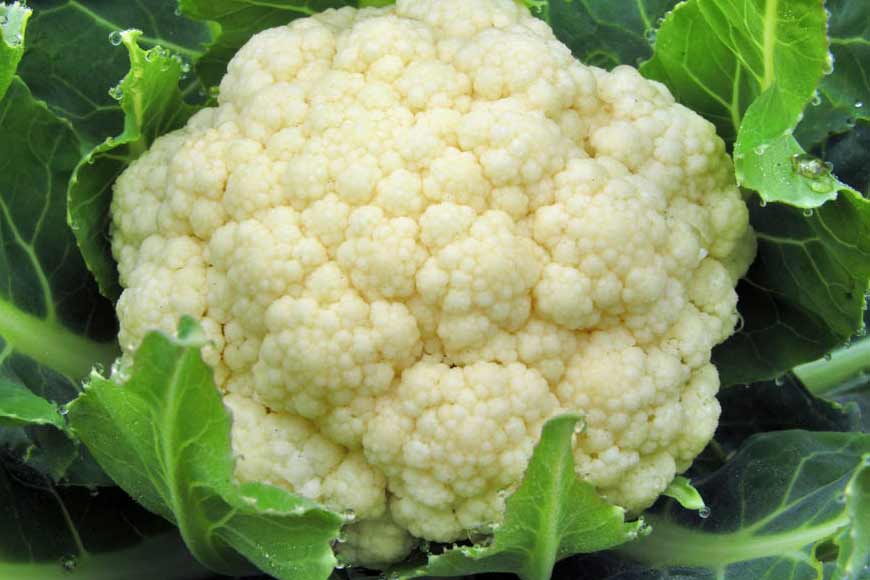
White cauliflower matures creamy white if the head is void of direct sunlight. Older cultivars need to be blanched (inner leaves are tied loosely over the small heads to reduce the amount of light penetration) to prevent the sun from turning white cauliflower to yellow. Newer cultivars are self-blanching as the plants produce inner leaves that hug the heads tightly preventing light penetration. No blanching is required for the colorful varieties.
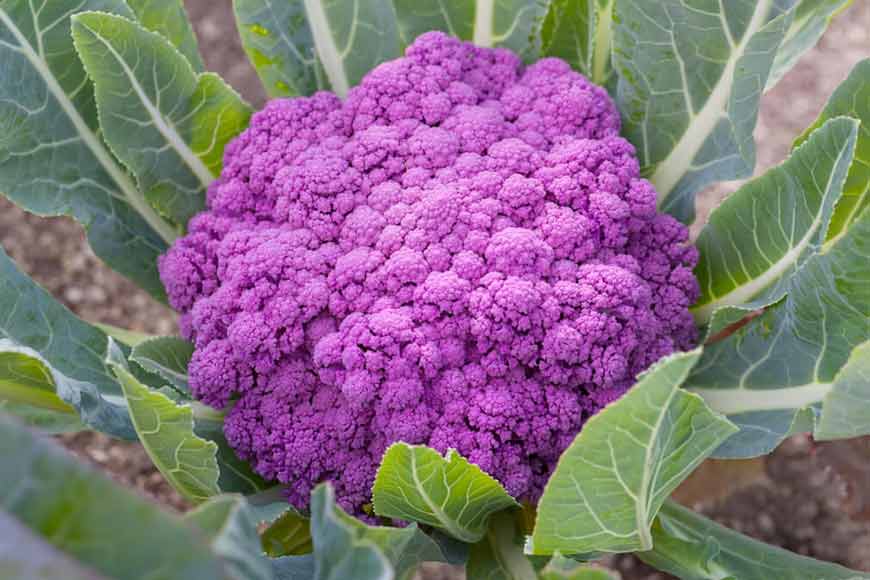
Purple cauliflower gets its color from anthocyanin, a naturally occurring phytochemical that is also found in other red, blue, or purple fruits and vegetables, as well as red wine. Carotenoids are responsible for the color of orange cauliflower; carotenoids are also found in carrots, squash, and other yellow vegetables and fruits. Orange cauliflower actually came about as a genetic mutation that allows it to hold more beta carotene than its white counterpart. Green cauliflower, also known as broccoflower, is a hybrid of broccoli and cauliflower. Green cauliflower contains more beta carotene than white cauliflower, but less than broccoli.
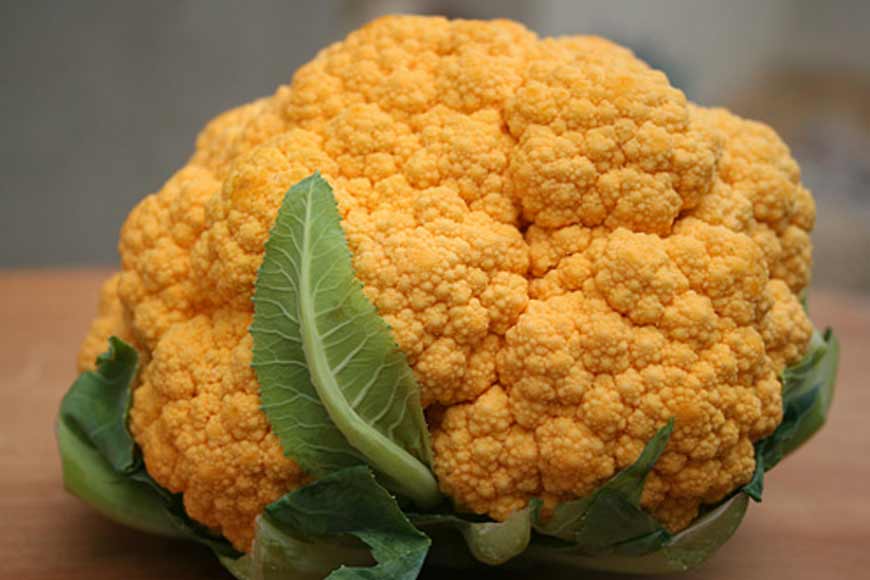
While traditionalists may balk at the unusual colors, it is not the first time that plant breeders have changed the appearance of vegetables. Until the 17th century, most carrots eaten in Europe were white, yellow, or purple. The orange pigment was added by Dutch plant breeders looking for a way to celebrate Holland's royal family. The last few years have seen the introduction of purple carrots to supermarkets in Britain, along with yellow tomatoes and purple potatoes. In America, where colored cauliflowers have been available for several years, they have been a big hit with foodies. The orange cauliflower has higher than normal levels of beta carotene, a form of vitamin A that encourages healthy skin. The purple color comes from anthocyanin, which may help prevent heart disease by slowing blood clotting. Tests of the orange cauliflowers in America found that they contained 25 times the concentrations of beta carotene in normal cauliflowers.
The colorful cauliflowers and cabbages are in great demand in the Netherlands and France. Farmers in our country are showing interest in this type of cultivation. They have realized the commercial value of these vegetables and are venturing into mass cultivation. A large number of farmers in different areas of the Durgapur subdivision have cultivated colorful varieties of vegetables this year. Colored cauliflower can be eaten raw, roasted, grilled, sautéed, or steamed.










